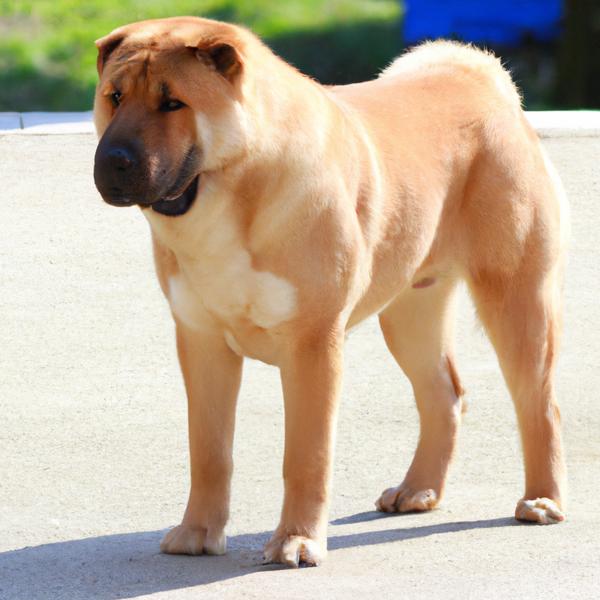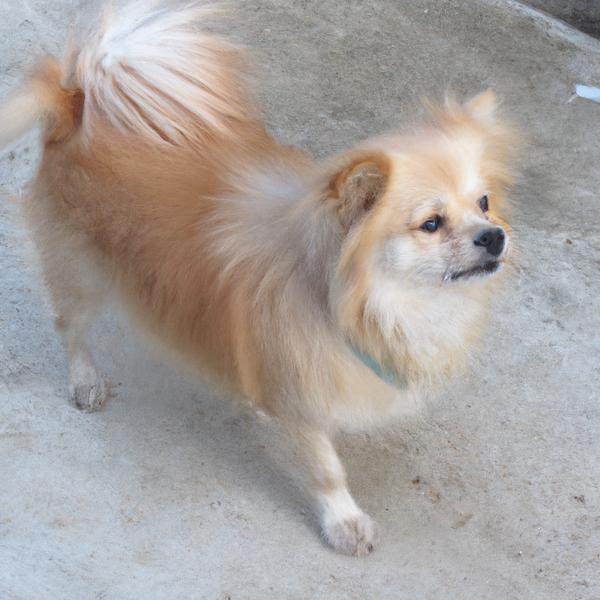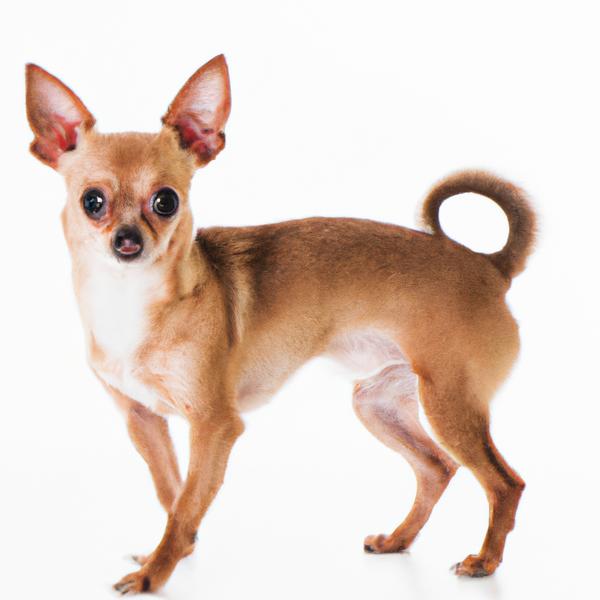Chin-Pin vs. Italian Bulldogge: Breed Differences and Similarities
Hypoallergenic
Are Chin-Pins or Italian Bulldogges hypoallergenic, or neither?
Unfortunately, neither Chin-Pin nor Italian Bulldogge are hypoallergenic, which may not make them the best choice for dog lovers who suffer from pet allergies.
Temperament
What are the personalities of Chin-Pin and Italian Bulldogge dogs?
Playful
Loving
Independent
Energetic
Alert
Intelligent
Friendly
Outgoing
Responsive
Loyal
Clever
Loving
Stubborn
Protective
Alert
Courageous
Confident
Friendly
Obedient
Dominant
Strong
Trainable
Fearless
Shedding Level
Do Chin-Pins shed more than Italian Bulldogges, or which breed sheds more, Chin-Pins or Italian Bulldogges?
Chin-Pin or Italian Bulldogge dogs are not heavy shedders, but they will lose a significant amount of hair each year. To decrease the amount of shedding, you can regularly brush your Chin-Pin or Italian Bulldogge. This will remove loose hair and keep their coat growing in the same direction.
Watchdog Ability
Which dog breed makes a better watchdog, the Chin-Pin or Italian Bulldogge?
Chin-Pins aren't great guard dogs; they tend to just watch without taking action.
Italian Bulldogges make excellent watchdogs - they're vocal and protective of their territory.
Origin
What is the origin of Chin-Pin and Italian Bulldogge dog breeds?
United States
United States
Ancestry
What are the origins of Chin-Pin and Italian Bulldogge breeds?
Japanese Chin, Miniature Pinscher
Neapolitan Mastiff and Olde English Bulldogge
Date of Birth
When were Chin-Pin and Italian Bulldogge breeds first developed?
Unknown
2000s
Eye Color Possibilites
What are the eye colors of Chin-Pin and Italian Bulldogge dogs?
Brown
Brown
Nose Color Possibilites
What are the natural nose colors of Chin-Pin and Italian Bulldogge?
Black
Black
Brown
Coat Color Possibilites
What are the natural colors of the coat for Chin-Pin and Italian Bulldogge breeds?
Black
White
Red
Brown
Black
Red
Brindle
Blue
Coat Length
What is the typical coat length for Chin-Pin and Italian Bulldogge breeds?
The Chin-Pin and Italian Bulldogge breeds are known for their short coat.
Coat Density
What is the density of the coat of Chin-Pin and Italian Bulldogge?
Coat Texture
What is the hair texture of Chin-Pin and Italian Bulldogge?
Straight
Litter Size
What is the usual litter size for Chin-Pin and Italian Bulldogge?
A Chin-Pin can have a litter of 2-5 puppies on average. However, it's worth noting that the size of the litters can vary greatly. Factors that can influence litter size include the health of the mother, breeding history, and genetics.
An Italian Bulldogge can have a litter of 6-12 puppies on average. However, it's worth noting that the size of the litters can vary greatly. Factors that can influence litter size include the health of the mother, breeding history, and genetics.
Adaptability
Chin-Pins are highly adaptable and versatile, making them excellent companions for families and individuals of all lifestyles.
Italian Bulldogges are known for their adaptability and can adjust well to different environments and lifestyle changes.
Health Issues
Between Chin-Pin and Italian Bulldogge, which breed is more prone to health problems?
While the Chin-Pin breed is generally healthy, occasional vet check-ups are still necessary to address any health concerns.
Italian Bulldogges typically have low vet costs due to their good health, but it's important to monitor their health and seek vet care when necessary.
Major Concerns
What are the major health concerns for Chin-Pin and Italian Bulldogge breeds?
Patellar Luxation
Legg-Calve-Perthes Disease
Hip Dysplasia
Minor Concerns
What minor health issues should be kept in mind when owning Chin-Pin and Italian Bulldogge?
Epilepsy
Mitral Valve Disease
Progressive Retinal Atrophy (PRA)
Ectropion
Cherry Eye
Skin Fold Dermatitis
Occasional Tests
What occasional tests are recommended for Chin-Pin and Italian Bulldogge breeds?
X-Rays
Physical Examination
Blood Work
Ophthalmic Examination
X-Rays
Eye Examination
Skin Evaluation
Complete Physical Examination
Energy
How do the energy levels of Chin-Pins and Italian Bulldogges compare?
Chin-Pins' high energy levels make them unsuitable for a low-key dog, choose accordingly.
Italian Bulldogges are suitable for those with a balanced lifestyle as they have an average energy level.
Social Needs
Chin-Pin vs Italian Bulldogge social needs comparison
Chin-Pin has very high social needs and requires regular mental and physical stimulation, a job or purpose, and companionship.
Italian Bulldogge has above average social needs and thrives with interaction with humans and other dogs.
Exercise Needed
Chin-Pin vs Italian Bulldogge exercise need comparison.
The Chin-Pin and Italian Bulldogge breeds are breeds that require minimal physical activity to maintain a healthy lifestyle. They are ideal for people with busy lifestyles, elderly people or those who have limited mobility. They also make great pets for those who live in small apartments or have limited outdoor space.
Sleeping Need
Which of the two sleeps the most/least: Chin-Pin or Italian Bulldogge?
Chin-Pins have moderate energy levels and typical sleep patterns of 12-14 hours per day.
Italian Bulldogges are known for their relaxed and calm nature and enjoy long periods of sleep.
Tendency to Bark
Do Chin-Pins or Italian Bulldogges bark more/less frequently?
Compared to most other breeds, Chin-Pin and Italian Bulldogge tend to be less vocal and bark less frequently. They typically only bark when necessary, such as to communicate or alert their owner, and do not bark excessively, especially when left alone.
Mouthiness
Mouthiness Comparison: Chin-Pin vs Italian Bulldogge?
Roaming urge
Chin-Pin vs Labrador: Running away tendency?
Prey Drive
Chin-Pin or Italian Bulldogge - which breed has a higher level of prey drive?
Activity Level
Which breed has higher energy, Chin-Pins or Italian Bulldogges?
Chin-Pins are medium-energy dogs and typically enjoy socializing and playing casual or even sustained games of chase with other dogs. They may also have occasional periods of barking or racing around the house.
Italian Bulldogges are high-energy dogs. They need mental as well as physical exercise. These dogs require a lot of your involvement and without it they can, and will, become problematic dogs.
Tolerance of being left alone
Walks per Week
How many miles should Chin-Pin or Italian Bulldogge walk each week?
There's really no limit to how far you walk your dog as long as they're comfortable. For Chin-Pin, it's at least 7 miles / week. Just remember to build distance and stamina gradually over time.
There's really no limit to how far you walk your dog as long as they're comfortable. For Italian Bulldogge, it's at least 11 miles / week. Just remember to build distance and stamina gradually over time.
Activity per Day
Do Chin-Pins or Italian Bulldogges require more exercise?
In general most Chin-Pins usually need at least 30 minutes of exercise daily. This can be spread across the day and include all sorts of high-energy activities, like walking, running and playing.
In general most Italian Bulldogges usually need at least 60 minutes of exercise daily. This can be spread across the day and include all sorts of high-energy activities, like walking, running and playing.
Grooming
Which breed is easier to maintain in terms of grooming, Chin-Pins or Italian Bulldogges?
Chin-Pin and Italian Bulldogge are breeds of dogs that are known for their low grooming needs.
Brushing Frequency
What is the recommended brushing frequency for Chin-Pin and Italian Bulldogge dogs?
Chin-Pin and Italian Bulldogge should be brushed at least once a week. Of course, you can give them more frequent brushes if you find that they are still shedding a lot.
Brushing Tools
What brushing tools are used for Chin-Pins and Italian Bulldogges?
Slicker Brush
Comb
Nail Clipper
Slicker Brush
Nail Clipper
Cups
How much food should be given to Chin-Pin or Italian Bulldogge in cups?
For an average 8-20 pound (4 - 9 kg) Chin-Pin feed 1 cups daily. But, keep in mind, the amount you feed is going to be dependent on the quality of the food you are feeding.
For an average 120-150 pound (54 - 68 kg) Italian Bulldogge feed 4 cups daily. But, keep in mind, the amount you feed is going to be dependent on the quality of the food you are feeding.
Daily Cost
Which breed has a higher daily cost, Chin-Pin or Italian Bulldogge?
The average cost of a Chin-Pin is somewhere $1.10 - $1.40 per day.
The average cost of an Italian Bulldogge is somewhere $3.90 - $4.20 per day.
Monthly Cost
Which breed has a higher monthly cost, Chin-Pin or Italian Bulldogge?
The average per month expenses of a Chin-Pin is between $35 - $42. This makes an average of $420 - $504 per year. It will be on the higher side when the dog is still small because it will need more frequent visits to the vet, shots.
The average per month expenses of an Italian Bulldogge is between $112 - $126. This makes an average of $1344 - $1512 per year. It will be on the higher side when the dog is still small because it will need more frequent visits to the vet, shots.
Intelligence
Comparing Intelligence: Chin-Pins vs Italian Bulldogges
Chin-Pins are average in obedience intelligence but have a high IQ and may cause trouble if left unsupervised.
Italian Bulldogge has below average obedience intelligence, but they excel in understanding human emotions.
Sensitivity Level
How do Chin-Pin and Italian Bulldogge compare in sensitivity?
These breeds are more sensitive than others and easily overwhelmed by new surroundings and people. Chin-Pin and Italian Bulldogge need gentle handling and a calm, stable home environment with positive reinforcement training.
Affection Dependance
Which is the more affectionate dog breed: Chin-Pin vs Italian Bulldogge?
Apartment Friendly
Which breed is more apartment-friendly: Chin-Pin or Italian Bulldogge?
Chin-Pins make excellent apartment dogs, being fairly active indoors and not requiring a yard.
The Italian Bulldogge is a great apartment dog, thriving with sufficient exercise and time outside as part of their daily routine.
Child Friendly
Do Chin-Pins or Italian Bulldogges have a friendlier temperament towards children?
Chin-Pins have an average level of friendliness towards children.
Italian Bulldogges are good with kids if socialized and trained from a young age.
Senior-friendly
Which dog is more suitable as a pet for the elderly - Chin-Pin or Italian Bulldogge?
Cat Friendly
Do Chin-Pin or Italian Bulldogge breeds have a better compatibility with cats?
Chin-Pins are good with cats, but early training is needed to prevent chasing behavior.
Italian Bulldogges are average in their friendliness toward cats and tend to do well with them, especially if raised together.
Dog Friendly
Which breed is more sociable with other dogs: Chin-Pin or Italian Bulldogge?
Chin-Pins are average in their friendliness towards other dogs, and socialization can help.
Italian Bulldogges are less friendly towards other dogs, but can improve with socialization.
Pet friendly
How do Chin-Pin or Italian Bulldogge dogs interact with other pets?
Stranger Friendly
Which breed is more friendly with strangers: Chin-Pin or Italian Bulldogge?
Chin-Pins are friendly but may bark at strangers, and training is easy due to their intelligence.
Italian Bulldogges are quick to announce strangers and can be standoffish or suspicious.
Playfulness
Which breed is more playful between Chin-Pin and Italian Bulldogge?
Chin-Pins are a playful breed that needs daily playtime to be happy.
Italian Bulldogges are not known for being a highly playful breed.
Trainability
How do the trainability levels of Chin-Pins and Italian Bulldogges compare?
Chin-Pins are usually easy to train but require consistency to fully obey commands.
Italian Bulldogges may require more time and patience to learn commands, but with consistency, they can be trained.
Compare Chin-Pin with other breeds

Bergamasco Shepherd
Chin-Pin vs Bergamasco Shepherd

Greybull Pit
Chin-Pin vs Greybull Pit

Pudelpointer
Chin-Pin vs Pudelpointer

Chigi
Chin-Pin vs Chigi

Sharbo
Chin-Pin vs Sharbo

Chug
Chin-Pin vs Chug

Beagle Point
Chin-Pin vs Beagle Point

Doberman Collie
Chin-Pin vs Doberman Collie

Sussex Spaniel
Chin-Pin vs Sussex Spaniel

Pekalier
Chin-Pin vs Pekalier

Cairn Australian Shepterrier
Chin-Pin vs Cairn Australian Shepterrier

Pitchow
Chin-Pin vs Pitchow

